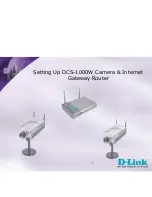
TF Port
When the switch is operating in NPV mode, the interfaces that connect the switch to the core network switch
are configured as NP ports. NP ports operate like N ports that function as proxies for multiple physical N
ports.
In trunking F port (TF port) mode, an interface functions as a trunking expansion port. It may be connected
to another trunked N port (TN port) or trunked NP port (TNP port) to create a link between a core switch and
an NPV switch or an HBA to carry tagged frames. TF ports expand the functionality of F ports to support
VSAN trunking.
In TF port mode, all frames are transmitted in an EISL frame format, which contains VSAN information.
Interconnected switches use the VSAN ID to multiplex traffic from one or more VSANs across the same
physical link. This feature is referred to as VSAN trunking in Cisco Nexus devices. TF ports support class 3
and class F service.
TNP Port
In trunking NP port (TNP port) mode, an interface functions as a trunking expansion port. A TNP Port may
be connected to a trunked F port (TF port) to create a link to a core NPIV switch from an NPV switch.
SD Port
In SPAN destination port (SD port) mode, an interface functions as a switched port analyzer (SPAN). The
SPAN feature monitors network traffic that passes though a Fibre Channel interface. This monitoring is done
using a standard Fibre Channel analyzer (or a similar switch probe) that is attached to an SD port. SD ports
do not receive frames, instead they transmit a copy of the source traffic. The SPAN feature is nonintrusive
and does not affect switching of network traffic for any SPAN source ports.
Auto Mode
Interfaces configured in auto mode can operate in one of the following modes: E, F, NP, TE, TF, and TNP
port. The port mode is determined during interface initialization. For example, if the interface is connected
to a node (host or disk), it operates in F port mode. If the interface is attached to a third-party switch, it operates
in E port mode. If the interface is attached to another switch in the Cisco Nexus device or Cisco MDS 9000
Family, it may become operational in TE port mode.
SD ports are not determined during initialization and are administratively configured.
Related Topics
Configuring VSAN Trunking, on page 83
Interface States
The interface state depends on the administrative configuration of the interface and the dynamic state of the
physical link.
Administrative States
The administrative state refers to the administrative configuration of the interface. The table below describes
the administrative states.
Cisco Nexus 5500 Series NX-OS SAN Switching Configuration Guide, Release 7.x
10
OL-30895-01
Configuring Fibre Channel Interfaces
Information About Fibre Channel Interfaces















































